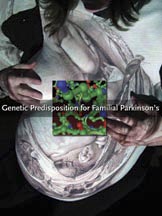Nathaniel Hawthorne published The Scarlet Letter in 1850, which was greeted, at the time, with great anticipation and enthusiasm, especially considering the alluring subject matter; that of America's Puritan past and the eternally interesting question concerning the chastity of women. These two topics were undoubtedly strong concerns of the generation and held the rapt attention of all people, including the religious, the political, and the fascination of both the wealthy and poverty-stricken social classes. In order to truly understand the influences contained in The Scarlet Letter, though, one must learn some of the history of the author. Hawthorne was born in Salem, Massachusetts, and throughout his life was troubled by his familial past. John Hathorne, Hawthorne's forefather, was one of the presiding judges at the Salem witch trials in 1692. Along with this strenuous relationship, the author was also raised by a widowed mother and spent his life attempting to discover a religion which avoided the judgments and persecutions found in that of his Puritan ancestors. In this search, Hawthorne discovered Transcendentalism, a movement that supported the conviction that divinity could be found in all things, especially nature. This belief system also supported a personal relationship with the spiritual versus that of a structured religion. These conflicts and personal struggles can be found prominently in Hawthorne's most enduring novel.
The story of The Scarlet Letter centers on the character of Hester Prynne, a woman who has been accused of adultery in a Puritan society and forced to wear a scarlet "A" attached to her breast to indicate her sin. Also caught up in the narrative is her infant daughter, Pearl, the child that was created out of wedlock, and who matures into adolescence during the novel. Other crucial characters include Roger Chillingworth, Hester's absent and brutal husband, who appears in Salem to locate his adulterant wife with a focus on revenge; and Arthur Dimmesdale, a young and influential minister, who is ultimately discovered to be Hester’s undisclosed lover, and who spends his time inventing new and painful torments to inflict upon himself to compensate for this secret indiscretion. In the novel, Hester is banned from society through the wearing of this scarlet "A". Due to this act, she ends up living a solitary life on the outskirts of town, completing charity work for those less fortunate than herself. Through the personal thoughts of Hester, the reader learns of her courage and her private code of morality. The "A" on her breast matures into a badge of courage, of resolute principles, and of devout love. Hester refuses to bend to the rules and judgments of a Puritan society, and through self-discovery earns the respect, and possibly the consideration, of the community. Also found in the daily experiences of Hester are the opinions and feelings of her daughter, Pearl. Pearl serves as the conscience of Hester, viewing their mutual experiences in a clear manner, and at times judging her father, Dimmesdale, for his refusal to acknowledge her as his daughter. Along with these two threads of consciousness is the hatred and scorn of Chillingworth. He devotes his time towards discovering his wife's lover and creating innovative and painful tortures for her to endure. Eventually, Chillingworth discovers Pearl's father, but too late. Dimmesdale and Hester finally acknowledge their love and their daughter to the town, only to have Dimmesdale die from the experience. At the end of the novel, Pearl and Hester leave Salem for many years, only to have Hester return alone much later, wearing the scarlet "A" until her death. She is eventually buried next to Dimmesdale, where they share a single tombstone bearing only this letter.
This complicated and intriguing novel serves as a foundation for an exhibition currently on view at the Mills Gallery titled, Exposing Scarlet: A Visual Response to the Scarlet Letter. A group of artists have come together to reflect on the underlying messages that can be found in Hawthorne's story, but also to translate these concepts into new and intriguing territory. Several members of this group have investigated the core framework of religion, not only as a foundation for The Scarlet Letter, but also as a metaphor for the story of Adam and Eve. Both Hester and Dimmesdale were expunged from civilization due to their sins, much as Adam and Even were barred from the Garden of Eden. To emphasize this connection is the concept of knowledge. Specifically, the knowledge of what it stands for to be human and to fall in love. These theoretical underpinnings can be found most prominent in a painting by Virgo Paraiso and Tino Rodriguez. In this work, two men stand in a garden, reminiscent of Eden. Exotic birds and colorful flowers surround the couple and a prominent putto lingers overhead. The two men lean forward in a kiss that dares society to judge. The night sky glows overhead, reminiscent of Hawthorne's use of night to enable excursions that may not be allowed during the day. Paraiso and Rodriguez take the core of The Scarlet Letter and surpass the basic interpretations of love, judgment, and religion into a controversial, and yet, familiar theme. To emphasize this spiritual twist is the ethnic source of the tribal tattoos that both men wear and the rainforest vegetation that is prominent in the painting. Another artist that incorporates the concept of Eden, although in a dissimilar format, are the photographs of Elizabeth Greenberg. Whether intentional, her blurred and surreal landscapes display a garden-like setting. The otherworldly forest scenes, evocative of Dimmesdale and Hester’s rendezvous location, depict a safe and tolerant place. A setting where one could discover the soft curves of human nature and where a desire for knowledge would be accepted without the harsh, and at oftentimes incorrect, judgments of a rigid society.
In accordance with the story of Adam and Eve, other religious characters and stories are investigated in Exposing Scarlet, like that of the Madonna and child. Lynn Imperatore has several works exhibited titled, Red Letter Day. There are total of four mixed media drawings, which are completed in graphite on paper, oil on panel, and gilding on wood. Each drawing is of a Madonna figure, concentrating on the heart and breast section of the body. At times, only a small fragment of the Madonna’s face is revealed to the viewer. Enclosed within each breast area is a small, inset box, framed by a golden border. Each small casing contains a painting of a scarlet "A", with various words and visual symbols inside. Some of the words, for example, are ambivalence, autonomy, and abortion. Through these collective metaphors, Imperatore's work explores the endless circle of the virgin and the whore and how those two identifiers, prevalent throughout history and also found in The Scarlet Letter can label or transform the path of a woman’s existence. How does western religion and the role of the Madonna affect contemporary women? How did this history, from the Virgin Mary to Hester Prynne, strengthen over time to become so rigidly ingrained in our culture? Where can the line be drawn and how can hundreds of years of religious influence be reformed? In the same vein of Imperatore's work, is the oil on wood painting by Colette Colascione titled, Cockfight. A woman in a crucifixion pose wearing a mask, garter, stilettos, thigh-high stockings, and a scarlet "A" around her neck faces the viewer. In each hand, she holds a cock, which seem to be straining to quarrel in the confinement of her hands. There are eggs all over the floor, some broken, with a female child in the background, sitting on the floor, with a vacant expression on her face. Also found in the painting are a crucifix on a far wall and a Star of David looming over the figure’s head. The conflict between female sexuality and the expected virtuousness of motherhood ripples from these symbols. Colascione emphasizes the numerous interpretations that can be incited through her use of the egg, the child, the mother, the whore, and the cock. Along with this fluctuating symbolism, the painting is beautifully crafted with the oil on wood glistening, only to emphasize the rich and luscious qualities of this woman and her surroundings. At the same time, the viewer is confronted with her precarious position and the struggling metaphors of her life.
There were several other works of art included in this exhibition that attempted to tackle The Scarlet Letter in a more subversive style. Sabrina Fadial’s large, three-dimensional sculpture, formed out of cotton fabric, titled Braid, is one example. The material is bright red, braided, and one end hangs suspended from the gallery ceiling. As the cord of cotton travels down through open space, it spools onto the floor, comparable to that of thread on a reel, with a large tassel protruding from the core. Although the red is indicative of Hester’s scarlet letter, the outward appearance is akin to that of an umbilical cord and the blood of birth. In the novel, which this work is based on, the only evidence of Hester's indiscretion was that of her daughter, Pearl. Through her birth, Hester was exposed and branded with the scarlet "A". There is a strong relationship between the child’s birth and the admonishment of her alleged sin. Along with Braid, Fadial has another sculpture in the exhibition titled Sweet Moral Bloom, formed out of plaster and white paint. The artist utilizes a similar theme, but integrates a more natural motif, that of a blooming flower. The white plaster is smooth and rounded and as in the paintings of Georgia O'Keefe, cannot help but bring to mind the supple folds of the female genitalia. Projecting from inside of the flower are four bulges, suggestive of the four primary characters of the novel, Dimmesdale, Chillingworth, Hester, and Pearl. There is an interconnected sexuality here, a “sin” that has brought together these participants in the story. Along with Fadial, other artists also investigate sexuality in The Scarlet Letter, including Nancy Christensen with her triptych, Love Letter, combining a type of sadomasochism or violence with love and sex, and Colette Calascione in her second painting titled, Anarchist in Love, an intimate tribute to the history of female portraiture with a decisive twist.
Although most artists in the exhibition Exposing Scarlet investigate religion, love, or sexuality in the work, there is one artist in particular who took an extremely innovative and original approach to the novel in question. There were two mixed media works by Pattie Belle Hastings that stepped beyond the usual interpretation. The first was an artist's book titled, The Scarlet Genotype. This book was originally The Scarlet Letter, but the artist chose to highlight specific words, remove various passages, and add scientific data from a wide array of sources. Much of the information that was added appeared to originate from scientific texts investigating genetics, DNA and how these can determine or rationalize the actions of an individual. Hastings transformed The Scarlet Letter to incorporate the contemporary themes of science, genetics, and what can be gleaned from these two fields of investigation. The second work by Hastings was a DVD projection on a three-dimensional sculpture. As you enter the petite and intimate viewing room at the Mills Gallery, you are greeted by a rocking chair, painted in white. In the chair is a white cast of a pregnant torso, smooth, unlined, and voluptuous in its beauty. On the sculpture, there is a continuous projection of slowly rotating imagery. The apparitions are a mixture of female portraits, strains of DNA, and other genetic codes. This multi-media piece, along with Hasting's book, question our current scientific applications and the effect that they may have on contemporary women, but at the same time, reflect back on how genetics might alter our perceptions of the characters in The Scarlet Letter. Could Hester be perceived differently in the light of science? Is scientific practice replacing religion to be the judge and jury in human behavior? Is science the answer to investigate morality, sin, and sexuality?
Exposing Scarlet brings to the forefront an approach that is often overlooked by the visual arts. There is a foundation to be found in the question of how literature, the history of the written word, and the conceptual framework found in fiction novels can be sources of introspection and investigation for artists. Not only can these texts be used to learn more about our contemporary issues and customs, but can also be used to invent new techniques of thinking about and exploring the past.
Links:
Boston Center for the Arts
The Scarlett Letter at Bartleby.com
"Exposing Scarlet: A Visual Response to the Scarlet Letter" is on view until October 31st, in the Mills Gallery at the Boston Center for the Arts, 539 Tremont Street, Boston
All images are courtesy of the artists and the Mills Gallery at the Boston Center for the Arts
Kimberly Potvin is a Boston based writer and artist. Kimberly is a regular contributor to Big, Red & Shiny.f



